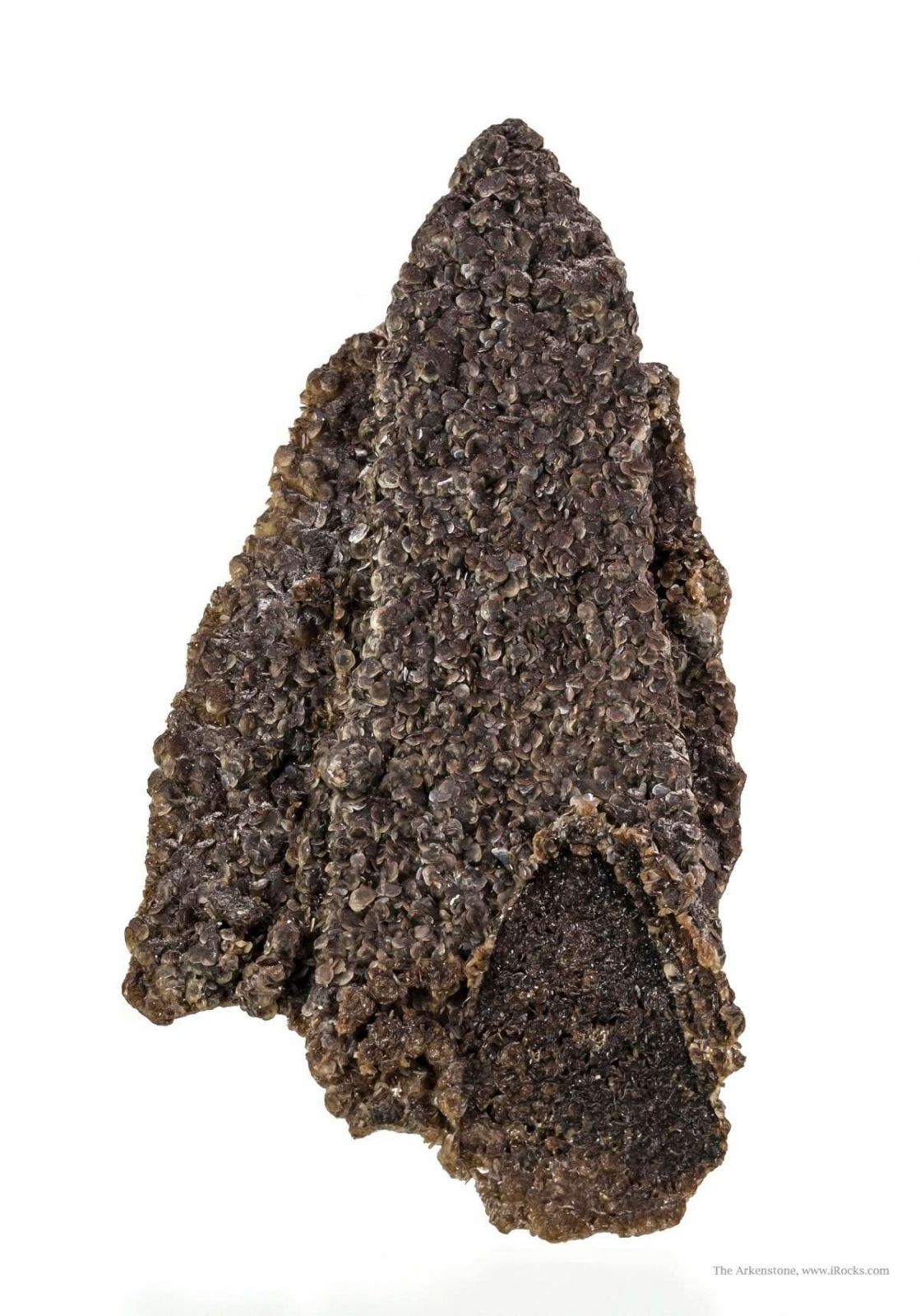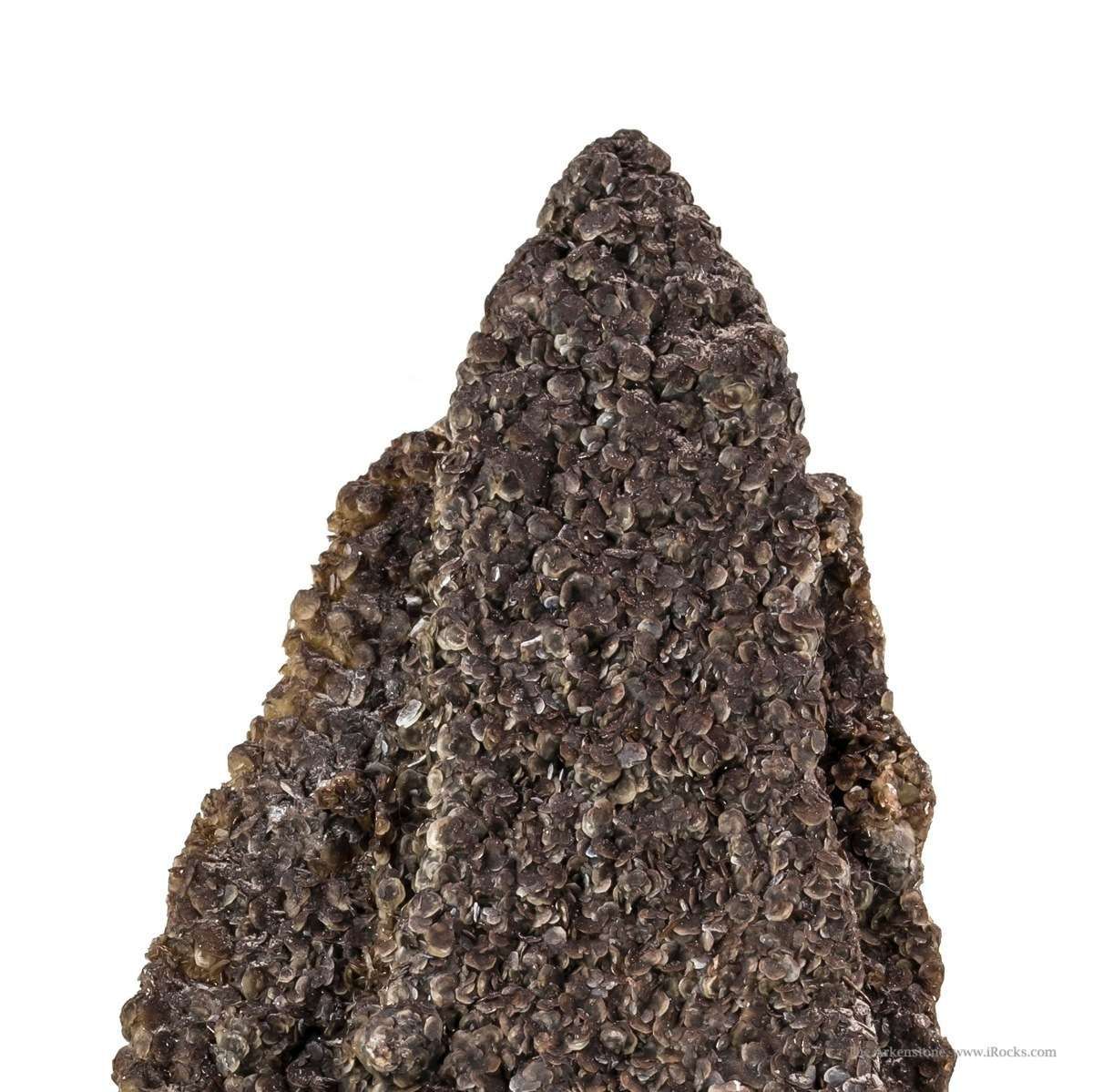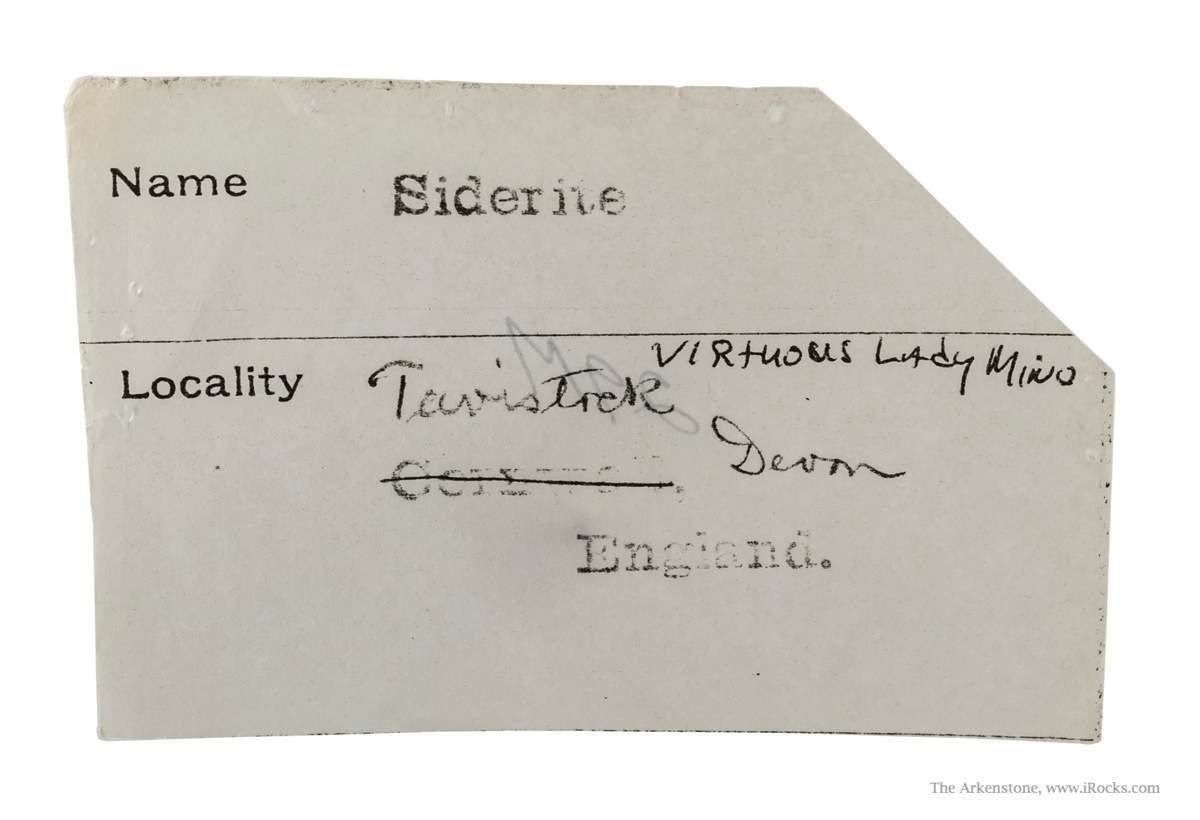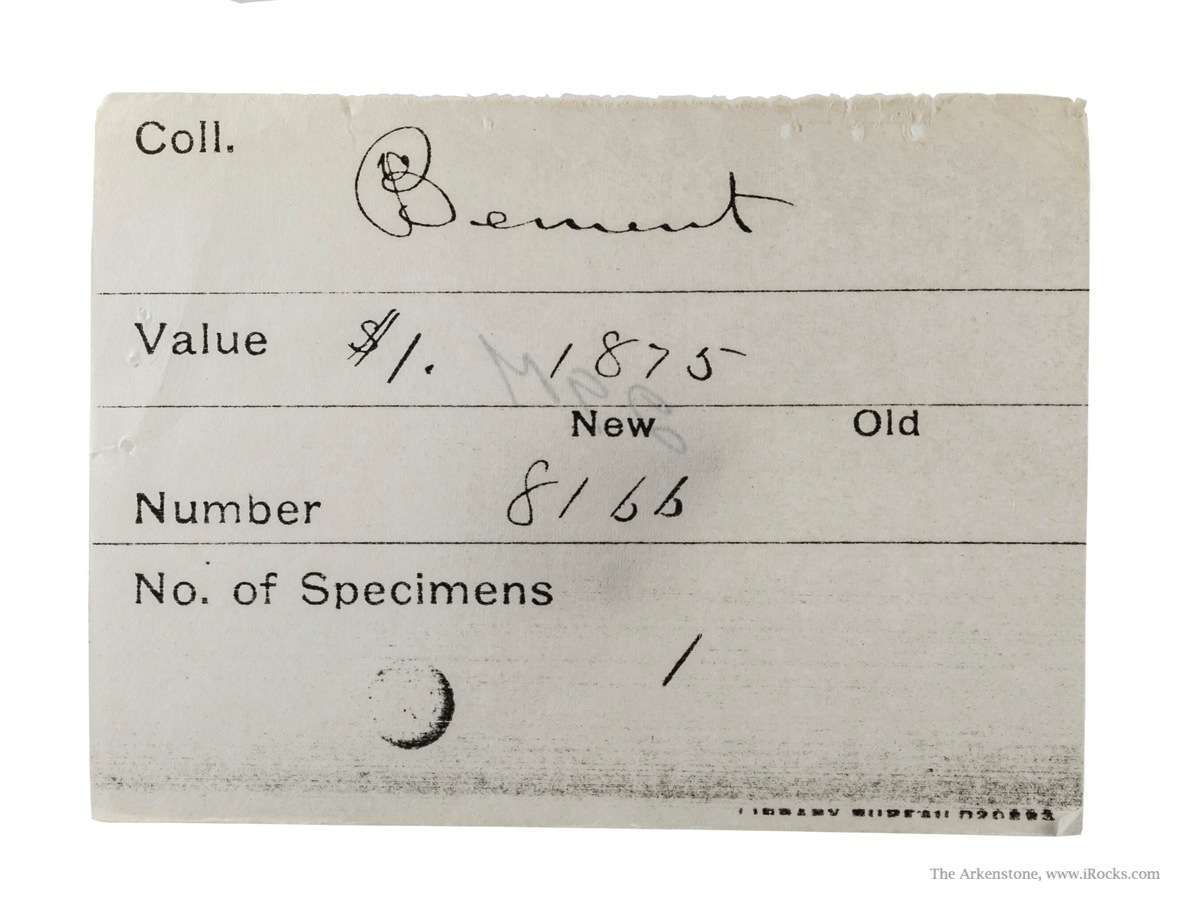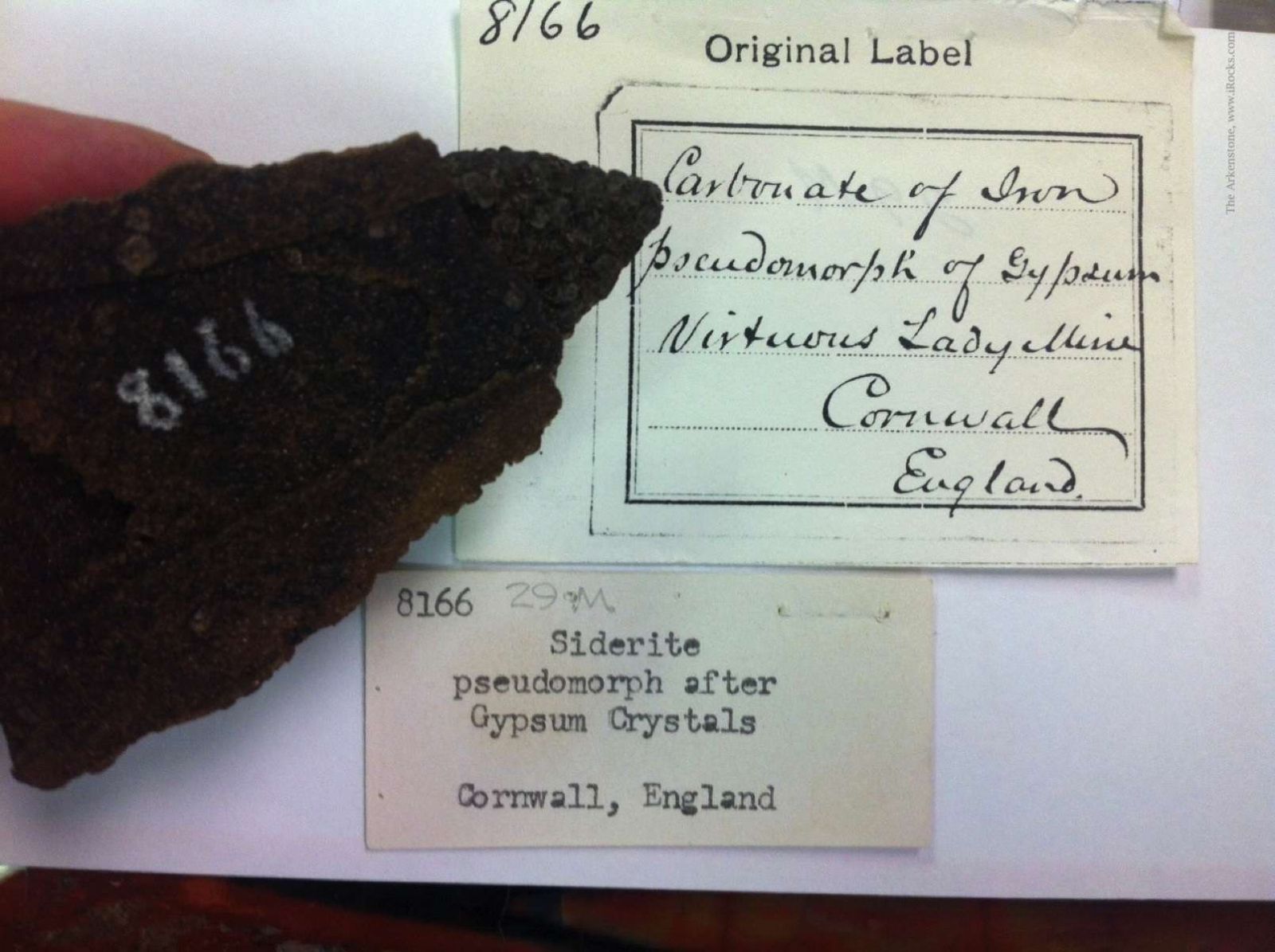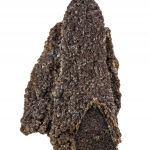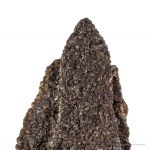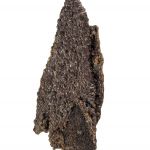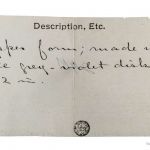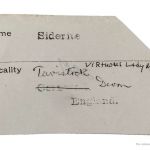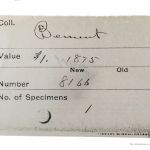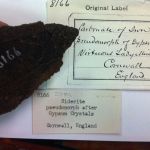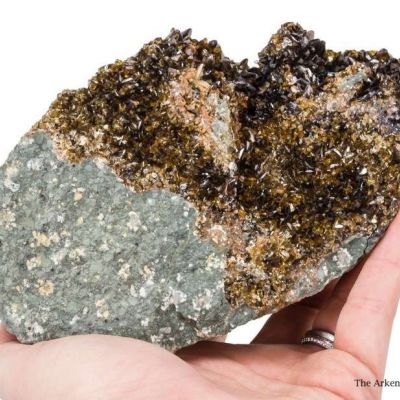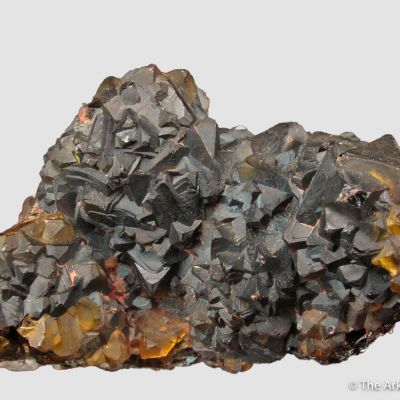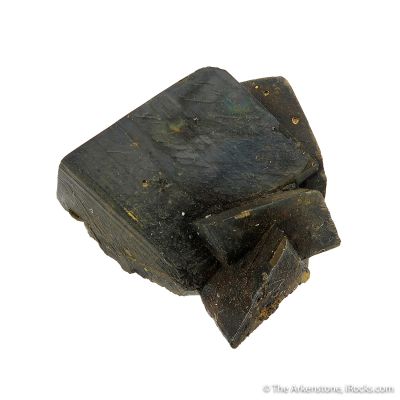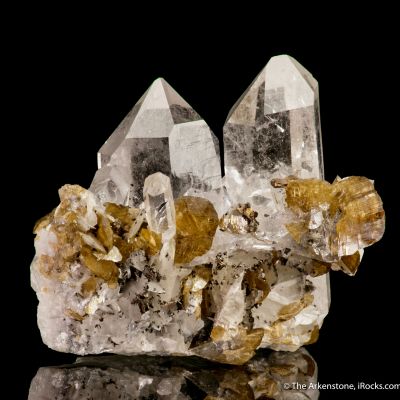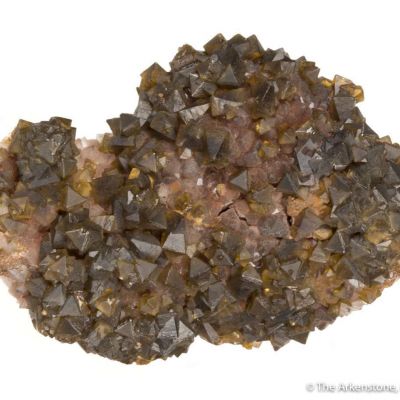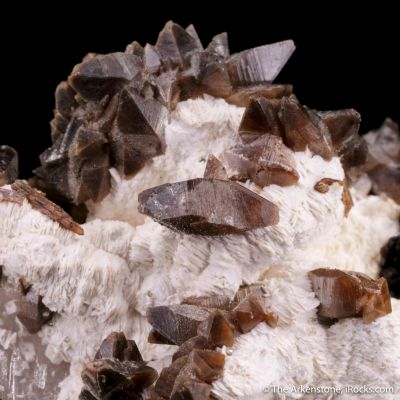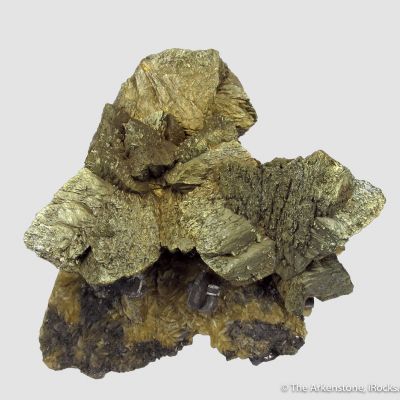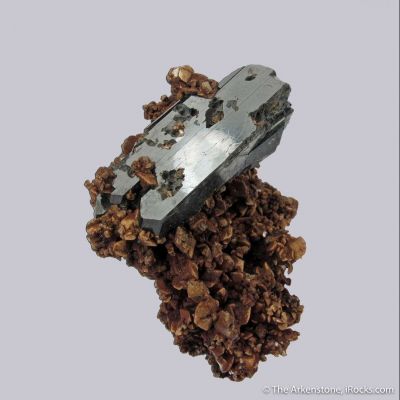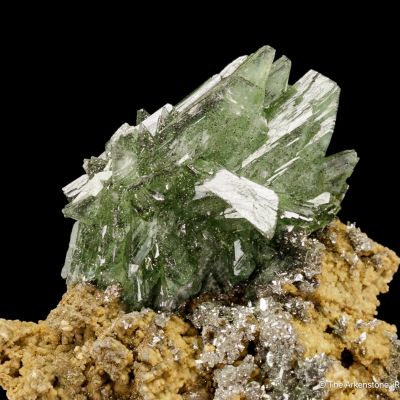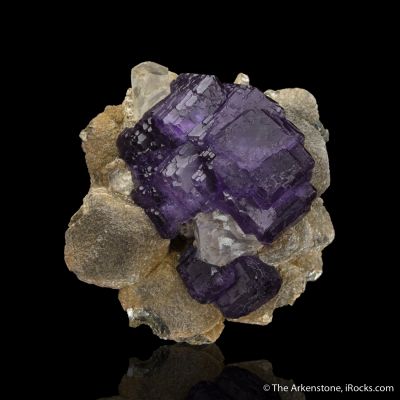- TUC14-110
- Siderite Pseudomorph After Baryte "Lady Slipper"
- Virtuous Lady Mine, Buckland, Devon, England, United Kingdom
- Cabinet, 9.4 x 5.1 x 1.0 cm
- Ex. Dr. Ed David; Clarence Bement; American Museum of Natural History
- SOLD
These are old classics, seldom seen for sale, and dated to the mid-1800s. They are almost legendary in the historic collecting field, and specimens of these "lady slippers" once sold for way more than their weight in gold back in the day. They are a true oddity, absolutely resembling a "lady's slipper," as the 19th-century English collectors christened these. They are still today the most famous epimorph/pseudomorph one can search for to own. This one has a pleasing chocolate brown color (some are rather grey), and is an extremely sharp cast of what once was a bladed crystal of Baryte, replaced by encrustation by the siderite. This old-timer was once in the collection of the most famous collector in the USA circa 1900, Clarence Bement (late 1800s), and then purchased by financier JP Morgan in 1910 and donated to the American Museum of Natural History. A truly unusual specimen! These have never been found again, and remain one of the most rare and hard to get of the old European classics. It is also remarkably complete and unrepaired. This particular specimen comes with the American Museum photocopies of their original accession information (they do not give out the original catalogue pages), which notes the purchase price of $1 in 1875. Further, it retains an original display label from the "Morgan Hall" where much of the collection was displayed for some 50 years. Note that the numbers on the AMNH label and the Bement catalogue page match that painted on the back of the specimen, in the hand of Charles Gratacap, curator at the time of the accession (#1866). Finally, the specimen was in the first collection of Dr. Ed David, of New Jersey, which sold in 1993.
